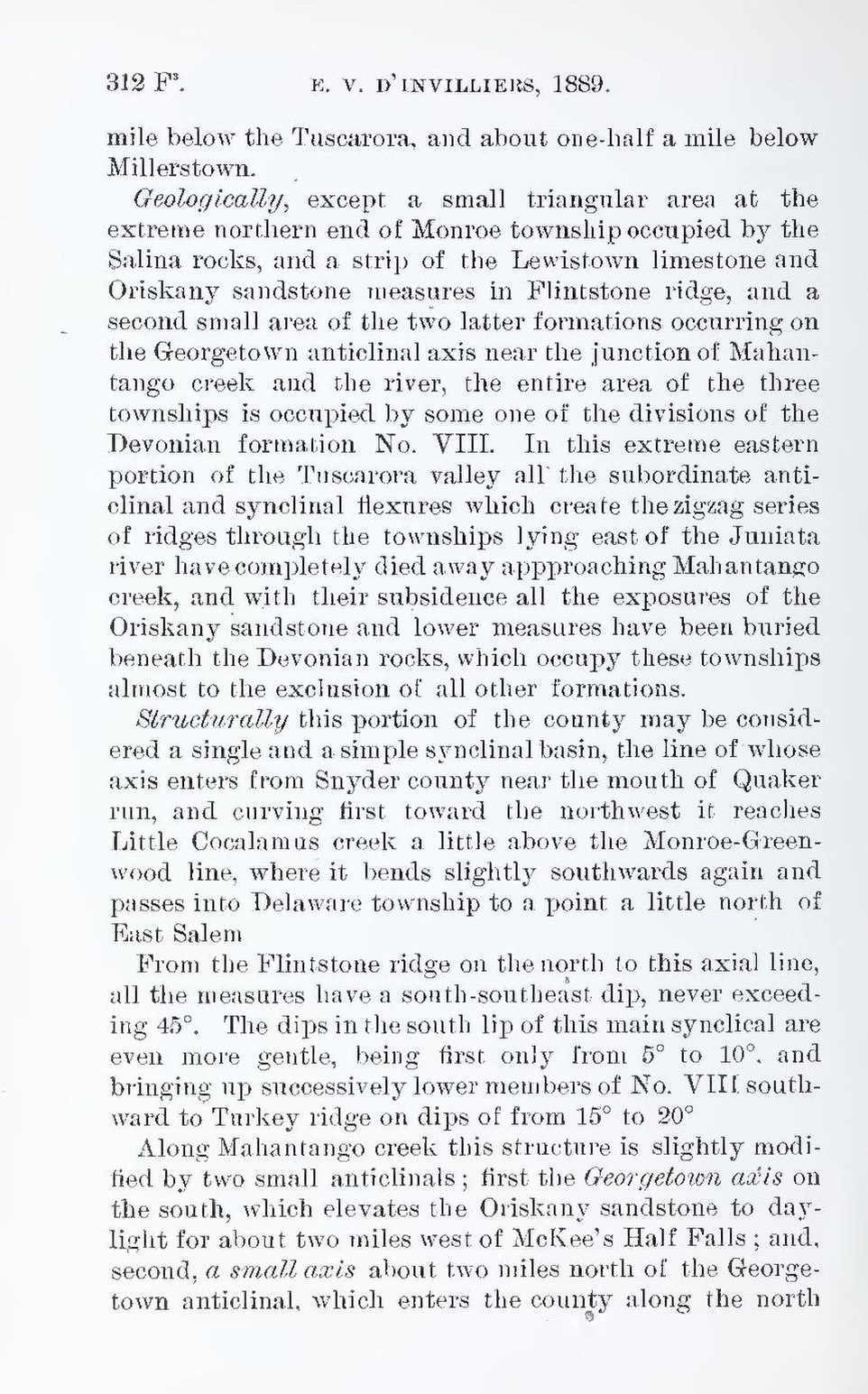mile below the Tuscarora, and about one-half a mile below Millerstown.
Geologically, except a small triangular area at the extreme northern end of Monroe township occupied by the Salina rocks, and a strip of the Lewistown limestone and Oriskany sandstone measures in Flintstone ridge, and a second small area of the two latter formations occurring on the Georgetown anticlinal axis near the junction of Mahantango creek and the river, the entire area of the three townships is occupied by some one of the divisions of the Devonian formation No. VIII. In this extreme eastern portion of the Tuscarora valley all the subordinate anticlinal and synclinal flexures which create the zigzag series of ridges through the townships lying east of the Juniata river have completely died away appproaching Mahantango creek, and with their subsidence all the exposures of the Oriskany sandstone and lower measures have been buried beneath the Devonian rocks, which occupy these townships almost to the exclusion of all other formations.
Structurally this portion of the county may be considered a single and a simple synclinal basin, the line of whose axis enters from Snyder county near the mouth of Quaker run, and curving first toward the northwest it reaches Little Cocalamus creek a little above the Monroe-Greenwood line, where it bends slightly southwards again and passes into Delaware township to a point a little north of East Salem.
From the Flintstone ridge on the north to this axial line, all the measures have a south-southeast dip, never exceeding 45°. The dips in the south lip of this main synclical are even more gentle, being first only from 5° to 10°, and bringing up successively lower members of No. VIII southward to Turkey ridge on dips of from 15° to 20°.
Along Mahantango creek this structure is slightly modified by two small anticlinals; first the Georgetown axis on the south, which elevates the Oriskany sandstone to daylight for about two miles west of McKee’s Half Falls; and, second, a small axis about two miles north of the Georgetown anticlinal, which enters the county along the north
